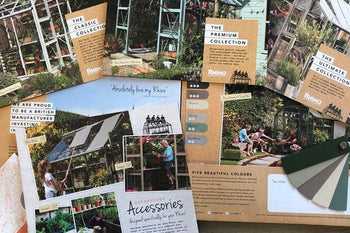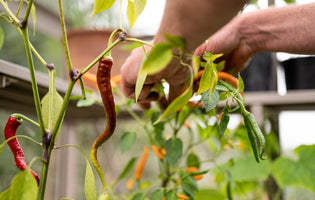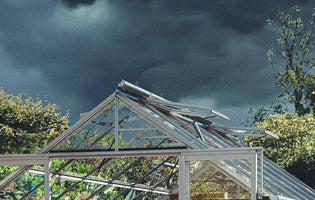If you're new to gardening, and have no idea where to begin, you might head to the garden center and wonder the aisles for hours trying to figure out what you need. With thousands of gadgets on display and a hundred versions of each, it's easy to get overwhelmed. But if you take it down the bare essentials, you can't really go wrong.
I asked our friend Jo Rice, the gardener at Grapes Hill Community Garden, what her absolutely essential tools were.
-
My Hands!

With them alone I can do lots of things. Weeding, planting, collecting seed heads, pinching out leaves and plant tops when needs be. Also they are needed to use all my other lovely tools! -
A Good Pair of Gardening Gloves

So I can pull out tougher, prickly weeds and those with unpleasant caustic sap. They help prevent wear and tear on the hands when you have hours of gardening to do. And they stop me getting too filthy of course! -
A good trowel

I use one every day for digging holes to plant out or pot up seedlings, fill pots, troughs and hanging baskets with compost. Mound up potatoes with soil, loosen weeds with deeper roots etc. -
Secateurs

Absolutely necessary for pruning, cutting back brambles and dead wood and dead-heading roses etc. to prolong flowering. I use mine every day. In fact, I did some sneaky gardening in the pub garden with my secateurs the other evening. I cut back brambles hanging over walls very close to tables, which if it grew any longer could have caused injury. I also dead headed some old Buddleja blooms, so they will produce loads more. (Very cheeky Jo!) -
A decent spade

Not too heavy and not too light, so it can be used comfortably for hours. Digging over vegetable beds and flower beds, digging trenches for planting potatoes, digging out large weeds or transplanting larger shrubs, digging holes to plant tress, fruit bushes, shrubs, etc...
If I was allowed 6: I would say a lovely old hoe as well. They are great for keeping on top of the weeds, especially between rows of veg, slicing through their roots so they don’t have a chance to develop.
... And if I were allowed 7: A dibber is pretty handy too, although I usually end up being resourceful and using whatever is at hand. A twig, a pencil, a lolly stick - or a finger usually.
Of course there is so much more to consider when you first start gardening, but at least this will give you a nice concise start to your shopping list!
Happy Gardening!








